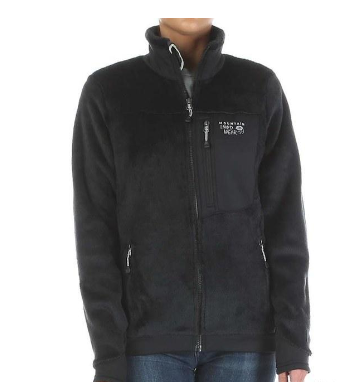What is a fleece jacket

Fleece textile is a method of raising fabrics, similar to flocking, brushing, etc. . As far as outdoor is concerned, in a broad sense it refers to outdoor clothing with downy and warm fabrics, and in a narrow sense it specifically refers to outdoor clothing made of polar fleece and lambswool.
Polar fleece was produced by Patagonia in 1981
Founder Yvon Chouinard invites Malden Mills
Together they developed Synchilla fiber produced from recycled plastic bottles, and in 1985 produced the first fleece fabric made of polar fleece, named Synchilla.
Fleece, the classic Snap-T-neck, is the ancestor of fleece. It was originally developed to be close to wool flannel in terms of thermal insulation performance, while being lighter and more comfortable. Polar fleece has also been hailed as one of the top 100 inventions of the 20th century by Time Magazine. To say that Patagonia is the well-deserved number one for fleece jackets, no one should be able to cite a stronger objection.
Polar fleece
Fleece jackets on the market are generally mainly made of polar fleece. It is composed of two knitted fabrics: lambswool. These two knitted fabrics are divided into warp knitting and weft knitting. The elasticity of weft knitting is greater than that of warp knitting. The disadvantage is that if one yarn breaks, it will cause threading. Polar fleece and lamb’s wool are as shown in the pictures above and below. Polar fleece has a fluffy shape, while lamb’s wool has a larger shape and is similar to real lamb’s fur. This is the difference between the two in appearance. In terms of thermal insulation effect, lamb fleece is also better than polar fleece. The picture below shows Retro-X, which has become popular in the past two years.
Sheppard
Fleece jacket material
Except for Patagonia’s Synchilla, most The famous Polartec is the most popular fleece product, which is light, soft, warm, quick-drying and does not shed lint. According to the gram weight per square meter, it is divided into 100, 200, and 300 series. The larger the number, the thicker and warmer it is. POLARTEC
THERMAL PRO, POLARTEC POWER STRETCH are also fabrics used more frequently by big brands, and are more high-end than the previous ones. And Marmot
Radiant P-825 has weaker performance than the fleece materials of the first two brands. Otherwise it’s just plain polyester.
The principle of fleece keeping warm
Fleece uses the air “fixed” between the villi on the surface of the fabric layer for warmth. In other words, the thicker the down layer, the more “fixed” air there is and the warmer it will be, because air is a poor conductor of heat. Polar fleece is made by forming fluff into balls to increase the space for fixed air. The advantage of professional fleece over ordinary fleece is that after being worn many times, the ball-shaped objects formed by the fluff have a stronger ability to restore, and the warmth retention ability is almost undiminished.
Fleece fabric is combined with windproof and durable fabric
The disadvantage of fleece fabric is that it is not windproof and not wear-resistant , not resistant to hook pull. Therefore, many fleece products are now compounded with waterproof breathable films and windproof, wear-resistant and durable woven fabrics on the basis of fleece fabrics to make the fabric functions of clothing more balanced and have a wider range of uses. They are no longer limited to the middle layer, but are increasingly used in the middle layer. It is mostly used in the outer layer, which is both fashionable and reduces the number of layers worn in outdoor clothing. For example GAMMA
MX can be said to be a soft shell or fleece.







